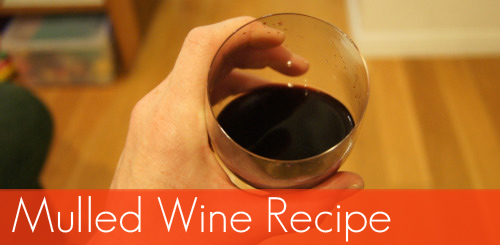

One thing to note is that mulled wine gets even better when it’s left to sit a little while, as the flavours mellow beautifully – if you can stop yourself to another helping, that is! And of course, you get those delightful spice aromas filling the house, creating the perfect atmosphere for a wintry afternoon.Just remember to keep an eye on it and top it up when it starts to reduce, adding more spices if their fragrance dissipates. If you like, you can also try making mulled wine in a slow cooker.
Easy mulled wine recipe free#
Feel free to experiment! Bay leaves, apples, ginger and even brambles can be used, leaving you with endless possibilities to devise your own unique twist on this beloved wine cocktail.For added effect, let the spices steep for about 20 minutes after turning off the heat.Never overheat the wine – low and slow is the best approach to infusing the wine with your chosen spices.And if you’re not a fan of Brandy, you could always try a splash of cognac, rum, or even bourbon! If you do have a sweet tooth however, you could always substitute the caster sugar with a generous helping of honey, maple syrup or brown sugar. If you don’t want things too sweet, try it without the caster sugar. For the spices, cinnamon sticks are the best way to go, but if you don’t have any at hand, you could also get away with ground cinnamon in a pinch. Make sure the oranges are fresh – if you want to avoid potential bitterness then peel the orange before simmering. Strain the wine with a fine mesh strainer, removing and discarding the fruit and spice elements. Reduce heat and then add the wine and brandy (if using).ħ. Bring to the boil and stir intermittently for 5 minutes.Ħ. Zest the orange before slicing, adding the slices and the zest to the pot.ĥ. Grate nutmeg, to taste and add to the pot.Ĥ. Add cloves, star anise, cinnamon stick and caster sugar.ģ. Add the water to a medium sized pot over a high heatĢ. It really can’t get much simpler than this – grab yourself the following ingredients, switch on the stove, and get that wine mulling! We like a mid-weight Merlot for our mulled wine, as its silky fruits of plum, cherry and mulberry, its hints of spice, and its soft texture makes it the ideal wine for mulling.ġ bottle of any lighter to medium-bodied red that has a lovely fruit profile (we suggest our any from our Med Reds pack)ġ.
Easy mulled wine recipe full#
Full of beautiful, warming flavours, it’s a sure-fire way to put a smile on your face, and a song in your heart. And while the world is brimming over with recipes for it, we make ours based off a recipe found in the 1861 classic, Mrs Beeton’s Book of Household Management. Mulling wine is an extraordinarily simple procedure. Simply put, the common theme in all mulled wine recipes, wherever they hail from, is keeping things warm, sweet and generously spiced! In a word, sensational – take the lovely fruit flavours of the wine, add the sweet tang of oranges and cinnamon and the savoury spices and you’re in gustatory heaven. Although usually made from red wine, fruits like blueberry and cherries are occasionally substituted in a fruit wine style, and there is even a white wine version that, while not as popular, nonetheless has a charm all its own. Take glüwhein, for instance, Germany’s traditional variation, which derives its name from the hot, glowing irons that were used to warm it. Unsurprisingly, given the geographical reach of the Roman empire and its trade networks, countless variations emerged as each country developed its own interpretation based on ready-to-hand ingredients. Over the course of their travels and conquests, they carried their taste for it – and their recipes – through Europe, along with the practice of viticulture itself. The first historical instance of it appears in 2nd century Rome and it is believed that the Romans prepared it to keep themselves warm through the cold winters. Mulled wine has its origins in ancient history, and is one of the earliest wine cocktails ever recorded. Put simply, mulled wine – also known as spiced wine – is a warm drink typically made with red wine, combined with mulling spices such as allspice, cinnamon, cloves, cardamom, nutmeg, fruits like oranges, lemons, and sometimes even raisins. But what is mulled wine, and how do you make it? Let’s find out with a little trip down history lane! Glüwhein, glögg, candola, svařák, vin chaud… wherever in the world you’re from, there’ll likely be a local mulled wine recipe that gets whipped up on the stovetop when the weather turns cool. This classic mulled wine recipe is super easy to make, and although a true winter warmer it’s just perfect to enjoy on any cool evening!


 0 kommentar(er)
0 kommentar(er)
